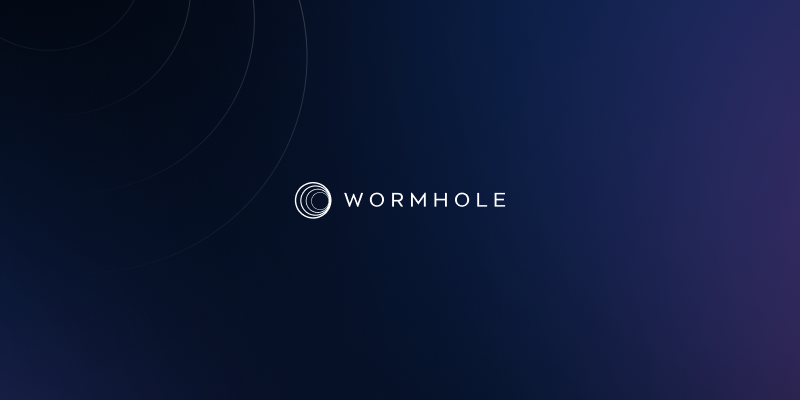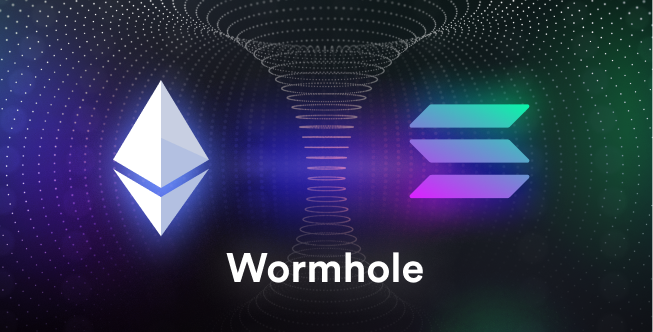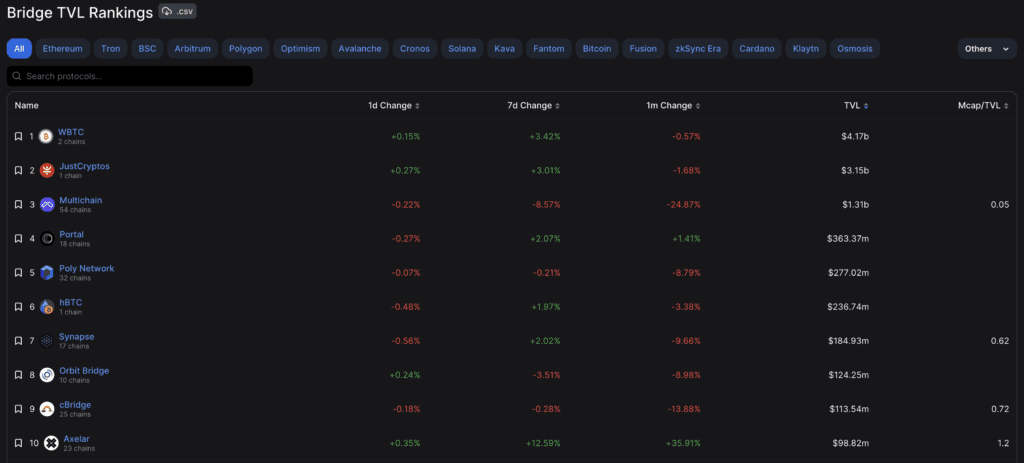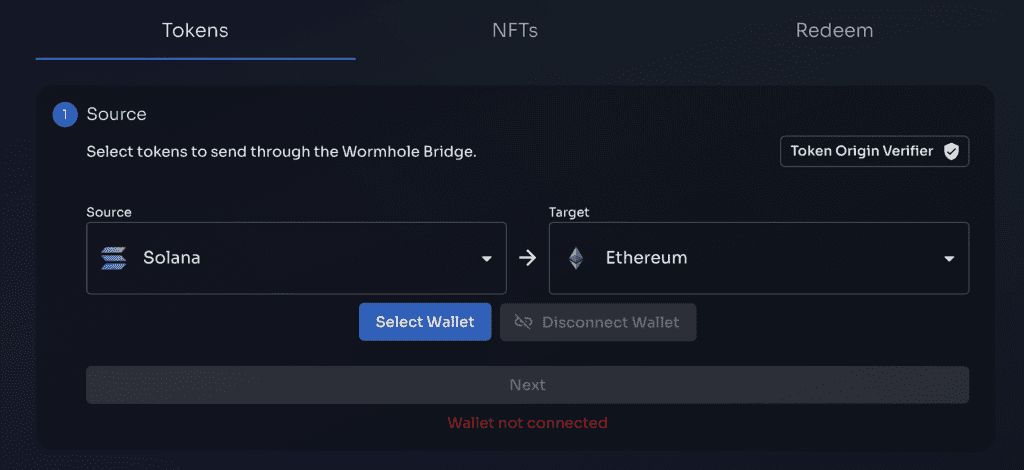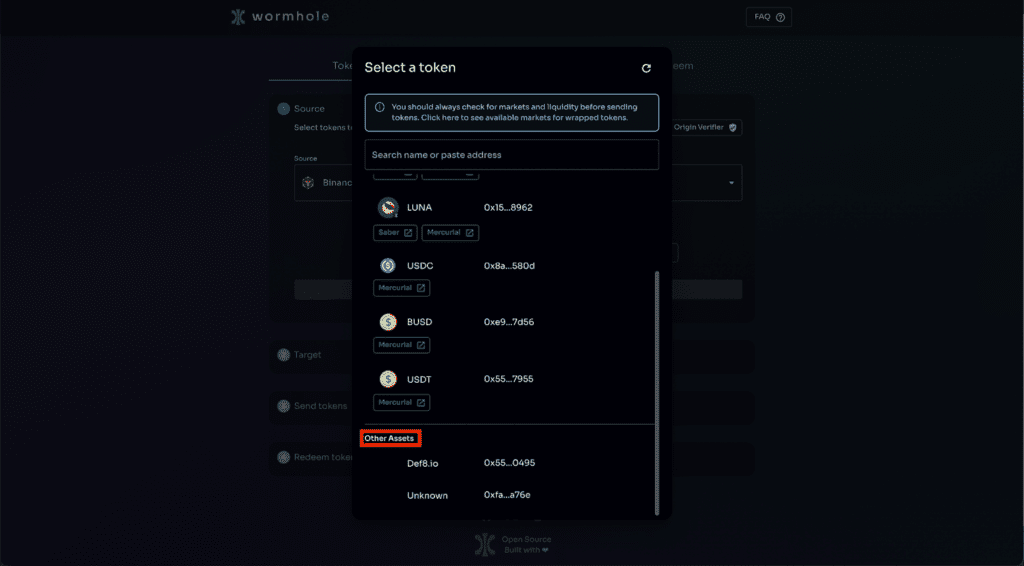Wormhole Review: The Most Powerful Cross-chain Bridge Protocol
5
0
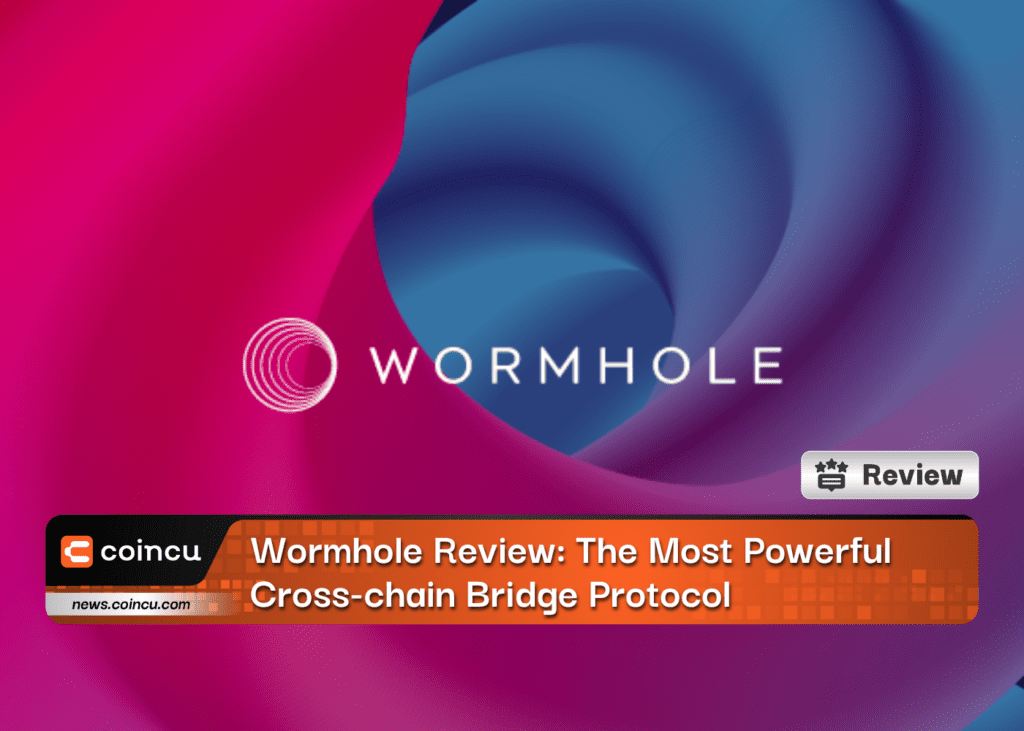
The difficulty of interoperability is one of the key downsides of the various blockchains on the market. This has resulted in several deficiencies and a failure to satisfy the demands of users. As a result, to maximize and capitalize on the enormous potential of such blockchain enterprises. The Wormhole project was created with the goal of creating a bridge that connects enormous ecosystems.
So what is Wormhole? Does the project really have potential? Let’s find out with Coincu through this article.
What is Wormhole?
Wormhole is a system that enables dApps and smart contracts to interact, link, and transfer data and assets across blockchains using cross-chain messaging technology. As a consequence, regardless of which blockchain is used, blockchain apps may function with any form of asset or service.
Wormhole, in particular, is a bridge technology that links various blockchain chains. Ethereum, Solana, Terra, Binance Smart Chain, Polygon, Avalanche, and Oasis are among the coins represented. The chains may interact thanks to the protocol. And instead of being divided, they speak with one another. Wormhole is presently focusing on crypto assets, pricing data, and non-fungible tokens.
The protocol will link and transport crypto assets across different networks in a simple and dependable manner. As a consequence, it is feasible to optimize and capitalize on the enormous potential of projects on several blockchains. It also supports synchronization with reduced latency. Also, the data may be utilized freely and without delay.
This is accomplished via the use of a network of guardian nodes, which aid in the protection of the protocol by watching and verifying events and data on its linked chains. Wormhole’s TVL now exceeds $1 billion and provides the required backing for the NFT.
Wormholes address what problem?
One of the biggest challenges that blockchain networks face is the difficulty in interacting with one another. This will create several impediments and render the ecosystem incapable of meeting the demands of consumers. Wormhole was therefore created to handle challenging situations such as:
Difficulties in moving tokens across blockchains
One often-used solution nowadays is to transfer assets through controlled exchanges. To be able to go anywhere you desire. This strategy, however, has several disadvantages because no one wants to entrust their money or possessions to others.
Interoperability issues with smart contracts and blockchain apps
Given the rising popularity of DeFi, smart contracts, and layer 2 apps. Interoperability between smart contracts is difficult. Thus the program unintentionally imposes a constraint on these blockchain networks. So how can it do this?
The Wormhole Core Layer arises in response to these constraints. The Core Layer is the most crucial component, the backbone of the Wormhole project’s complete ecosystem, and it addresses the entire basic interaction issue. Of course, the Core Layer does not have to be handled by centralization, such as the previously described centralized exchanges. Core Layer is incredibly strong and effective despite its simplicity. It operates by deploying a single contract per blockchain. This is known as a Core Contract. Other Core Contracts may leverage this feature to communicate off-chain or verify the legitimacy of a communication.
Guardians — Validator Nodes
The Guardian Network, however, is the most significant component of the Wormhole Core Layer. Guardian Network was developed to assist in the tracking and validation of messages transmitted from each blockchain through Core Contract.
All 18 Guardians are part of the Guardian Network. Wormhole’s blockchain will be observed by each unit. A message is not regarded genuine until it has been seen and acknowledged by two-thirds of the total Guardians. When it examines the message’s validity, they might be termed verification signatures. In particular, 18 Guardians are hand-picked among the world’s most famous Providers and Validators.
Wormhole Token Bridge
Wormhole’s most essential and well-known characteristic. It allows crypto-asset transactions across Layer 1 blockchains to be trustless and permissionless. Ethereum, Solana, Terra, Binance Smart Chain, Polygon, Avalanche, and Oasis are among them.
Highlights
Many popular blockchains supported
One of them is the diversity of blockchains supported, which allows users to access a broad range of DeFi protocols without relying on centralized solutions. You may, for example, move ERC-20 tokens from Ethereum to other chains and utilize DeFi protocols there. This is a nice answer to an issue that seems to have been there for some time, especially for Ethereum users who are battling with excessive gas prices. Similarly, holders of tokens from other chains may acquire access to the large Ethereum DeFi ecosystem.
Wormhole also supports Solana and Terra, two of the most popular Layer 1 blockchains on the market, with each having a quickly rising number of TVLs due to their own expanding DeFi ecosystems. Wormhole differs from most other bridges in that it supports all three “major” DeFi chains.
NFT bridges across chains
Moreover, the Wormhole NFT gateway enables users to transmit NFTs across many blockchains. Likewise, other popular token bridges do not provide this capability.
DApps are totally based on chains
Wormhole, in addition to the token bridge, offers decentralized apps developed on top of it. Developers may approach apps from a protocol-first design viewpoint thanks to Wormhole’s architecture. This may be chain-agnostic or make use of the characteristics of each blockchain. For example, an application may choose Solana to confirm transactions due to its cheap transaction costs, but Ethereum is the ultimate payment layer due to its security.
Wormhole effectively enables apps to leverage multiple Layer 1 blockchains as a Layer 2 solution. Developers may create multi-chain decentralized exchanges, chain-independent wallets, and even multi-chain DAOs.
Ecosystem and development platform
Wormhole is a developer ecosystem and platform. Developers may construct apps that enable the transfer of assets across the blockchains supported by Wormhole by integrating the Wormhole SDK, considerably enhancing liquidity. Users may, for example, transmit ETH from Ethereum to a Solana application or play games on Solana and collect NFT prizes from Ethereum.
A cluster of 19 nodes known as guardians secure and controls the Wormhole environment. Among the guardian nodes testing this Wormhole on-chain activity are well-known companies such as Everstake, the world’s biggest staking platform.
Non-EVM chains are supported
Wormhole is one of the few methods that allow data and assets to be transferred between EVM-incompatible blockchains such as Solana, Aptos, Sui, and Acala and EVM chains like Ethereum and Polygon.
Top TVL on DeFi market
Portal, Wormhole’s product, is worth more than $360 million in TVL, ranking fourth in the market’s Bridge category. Portal’s TVL used to be more than $4.6 billion, however, it has fallen dramatically since Terra’s UST collapse and the effect of the $326 million breach.
While it has previously been hacked for a huge sum of money, Wormhole has overcome it and responded fast by developing a bug bounty program for the project. Wormhole evaluates and discovers flaws in smart contracts, adds an extra layer of 2FA protection for users, employs additional technologies to identify aberrant network activity, and so on.
Infrastructure
As a user interacts with Dapps, this activity is relayed to the Wormhole blockchain through the following channels:
- Contracts to accept transactions, interact with xDaap, and deliver services are referred to as xDapp Contracts.
- Ecosystem Contracts: Wormhole-administered contracts that offer xDapps developers Wormhole’s feature set.
The Guardian Network validates this information before sending it to Relayers through VAA messages. Wormhole is a multi-signature authentication mechanism that uses VAA to safeguard cross-chain communication.
- Guardian Network: A validator that monitors Core Contracts on compatible blockchains and produces VAAs (signed notifications) when such contracts are triggered.
- Relayers: Relayers use off-chain functionality to decrease gas expenses and improve cross-blockchain interoperability.
- VAA (Verifiable Action Approvals): The Wormhole ecosystem’s core piece of data, comprising information supplied by xDapps as well as contact information via alerts. The VAA is signed by the guardian; authentication requires 13/19 signatures.
Products
Portal Bridge
Wormhole’s Portal Bridge is a cross-chain bridge project. To transfer assets across blockchains, Portal Bridge will use a lock and mint method.
When a user transfers token/coin X from chain A to chain B, Portal employs Wormhole’s “lock & mint” approach, in which they lock the original token in chain A in a smart contract and mint-create (mint) token X’ (wrapped token) in chain B.
The lock and mint mechanism may be easily mimicked as follows:
- People transfer ETH (Ethereum) using the Portal.
- This ETH will be protected by the smart contract.
- Locking ETH (wrapped ETH) on Chain B generates a new coin (target blockchain).
- The wrapped ETH may then be exchanged for other tokens on chain B.
Solana, Ethereum, Terra Classic, BNB Chain, Polygon, Avalanche, Oasis, Algorand, Aurora, Fantom, Karura, Acala, Near, Aptos, Celo….
For exchanging assets associated with Solana, Ethereum, and BNB Chain, Portal Bridge is most often employed.
With EVM Chain, the quantity of assets associated to Acala (a Polkadot parachain) has lately increased somewhat, accounting for roughly 5-9% of total bridge traffic on Portal.
Portal Bridge also operates under the following three entities:
Transfers
Portal must lock the original token on chain A and mint the wrapped token on chain B in order to move tokens from network A to network B. It is critical that the tokens on A first be verified locked. when minting is possible on B. Chain A facilitates this by locking the tokens and emitting a message indicating that the locking is complete.
Attestation
Key information is missing from the message delivery mechanism described above. Notwithstanding the fact that the action on thread B may rely on the cryptographic lock message on thread A. It has no means of knowing what the token that is being locked is. Portal Bridge offers token attestation to address this issue. Chain A sends a message with address information that thread B may use to determine the name, symbol, and decimal precision of the token address.
Relayers
Token bridging must be completed on the destination chain, which will necessitate payment of transaction fees in the native currency of that chain. Wormhole offers a system that enables Relayers to perform the last step and pay the charge on behalf of the user since many users initiating the transfer may not have any cash.
This technique works by enabling the user to define how much of the token they want to transmit as a charge. When a VAA transfer is sent, the contract pays the charge to the Relayers rather than the user.
NFT Bridge Portal
NFT Bridge is a location where users may transfer NFTs across chains like Ethereum, Solana, BNB Chain, Polygon, Avalanche, Fantom, Oasis, Karura, Aptos, and Celo.
NFT Portal presently supports the ERC-721 (metadata) token standard and the SPL token standard.
NativeSwap
Wormhole created a cross-chain money transfer mechanism using Stablecoin UST in early 2022. Nevertheless, due to the failure of UST in the middle of the year, this idea was scrapped.
Carrier
Carrier, which debuted in early March 2023, is a Wormhole-based Bridge created by Automata Network. Carrier is now compatible with 12 blockchains, including prominent chains such as Solana, Ethereum, BNB Chain, and Polygon. Further features, such as swap functionalities and a 2FA protection mechanism to assure bridge security, will be progressively published on the Carrier development roadmap.
Roadmap
Wormhole V1 was created in October 2020 by Certus One and other developers to connect Ethereum and Solana. Some developers have noticed increased consumer demand over time. Wormhole, a cross-chain communication mechanism that was introduced in August 2021, was the outcome.
As Wormhole progresses toward becoming a protocol that provides information communication solutions for market ventures, the team has restructured it such that it is no longer only a bridge.
Eventually, they decided to deploy Portal in early 2022 as a native bridge based on Wormhole’s technology.
The Portal Bridge and Wormhole development path is then described as follows:
- February 3, 2022: Wormhole exploited 120,000 WETH (equivalent to $324 million)
- February 4, 2022: Wormhole replenishes lost funds with the help of Jump Trading
- February 12, 2022: Open the Bug Bounty Program worth 10 million USD
- May 9, 2022: TVL drops from $4.9 billion to $600 million just one month after Terra’s crash
- December 2022: Hashflow partners with Wormhole
- March 2023: Integrate native USDC and Circle CCTP
Investors & Partners
Investors
Jump Trading is the investment fund that played a vital part in restoring money lost in the previous $325 million assault on Wormhole. Jump Trading, being one of the largest donors to Wormhole at the time, compensated for the losses by purchasing roughly $300 million in ETH on the market.
Prior to Jump Trading, there were a variety of investment funds in Wormhole that could be tracked, including Chorus One, Arrington Capital, Big Brain Holdings, and others.
Partners
Several projects from other ecosystems have integrated with Wormhole to enable Wormhole token wrap assets, including Solend, Trader Joe, Taiga, Raydium, Klap, and others.
Presently, the list of supporting projects from the 19 chains that Wormhole is integrating includes more than 50 distinct projects. Portal Bridge will thereby profit from the parent company’s collaborations.
Conclusion
Wormhole is one of the most popular cross-chain platforms with a big user base. Nonetheless, there are still several security threats.
This may aid in the growth of the Wormhole ecosystem. Transferring assets across blockchains has emerged as a critical need in the cryptocurrency business. The use of cross-chain communications technologies may raise demand for the platform.
DISCLAIMER: The information on this website is provided as general market commentary and does not constitute investment advice. We encourage you to do your own research before investing.
Join us to keep track of news: https://linktr.ee/coincu
Harold
Coincu News
5
0


